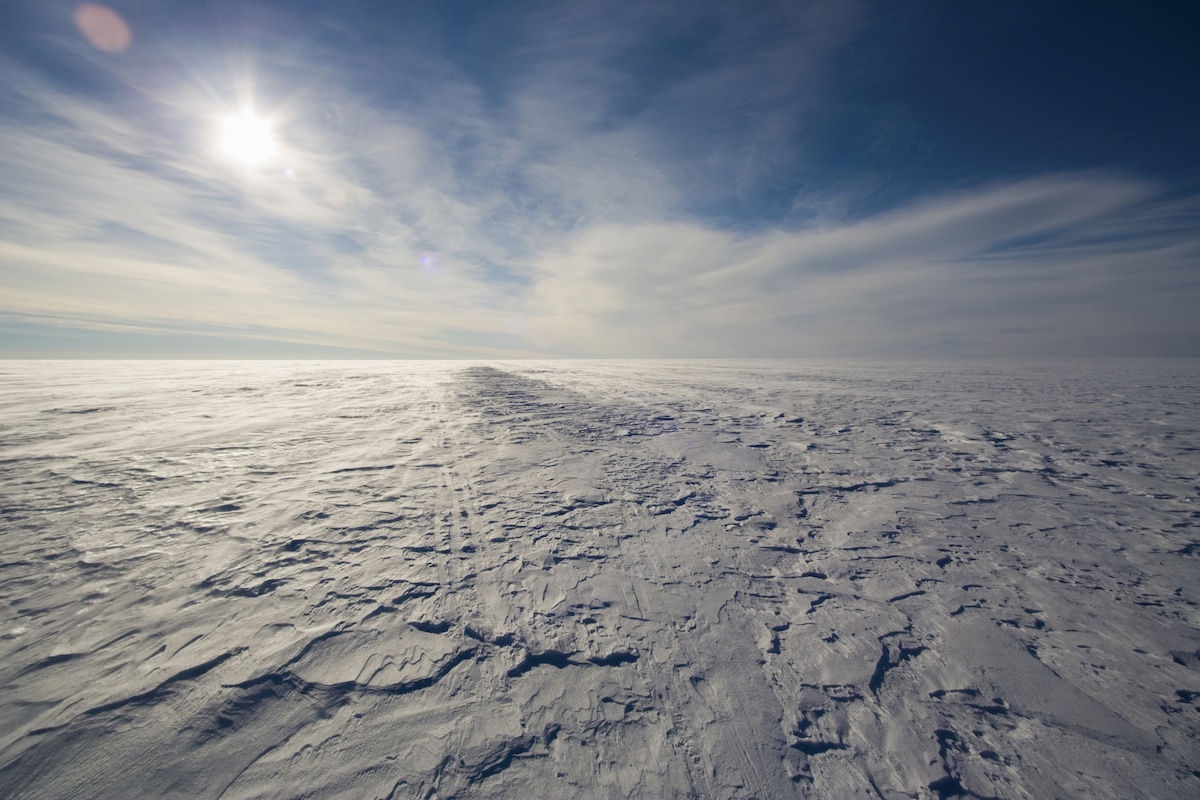

There is increasing alarm about the extent of microplastic pollution, which has been found everywhere from Everest to the Arctic.
However, it turns out there’s an even smaller and more toxic form of plastic pollution infiltrating remote reaches of the globe. A new study published in Environmental Research found significant quantities of nanoplastics in ice samples from both the North and South Poles.
“Now we know that nanoplastics are transported to these corners of the Earth in these quantities. This indicates that nanoplastics is really a bigger pollution problem than we thought,” study lead author Dušan Materić of the Institute for Marine and Atmospheric research Utrecht (IMAU) said in a press release.
Nanoplastics are plastics that are smaller than a micrometer in size. Their small size means they are more difficult to study than microplastics, or plastics between five millimeters and a micrometer. But they may be even more dangerous.
“Nanoplastics are very toxicologically active compared to, for instance, microplastics, and that’s why this is very important,” Materić told The Guardian.
Materić and his team from Utrecht University, the University of Copenhagen and the Université Libre de Bruxelles used new methods to measure nanoplastic pollution in ice samples from Greenland and Antarctica, the press release explained. They sampled a 14-meter (approximately 46 foot) deep ice core from the Greenland ice cap and sea ice from Antarctica’s McMurdo Sound, according to The Guardian. They found that there were an average of 13.2 nanograms per milliliter of nanoplastics in the Greenland ice and an average of 52.3 nanograms per milliliter in the Antarctic ice, the study authors wrote.
But what was even more surprising than the amount of nanoplastics in the remote ice was just how long it had sat there.
“In the Greenland core, we see nanoplastics pollution happening all the way from 1960s. So organisms in that region, and likely all over the world, have been exposed to it for quite some time now,” Materić said in the press release.
The study also looked at the types of plastic present in the samples. Half of the Greenland nanoplastics were polyethylene (PE), the kind of plastic used for plastic bags and packaging, according to The Guardian. A quarter came from tires and a fifth were polyethylene terephthalate (PET), which is used for clothing and bottles. In Antarctica, there were no tire particles. Half were PE and polypropylene, which is used for food containers and pipes, was the next most common.
Researchers think the tiny plastics reached Greenland by traveling on the wind and Antarctica through ocean currents.
“Further studies are clearly needed to better constrain the source of theses contaminants to the polar regions,” Materić said in the press release.

 233k
233k  41k
41k  Subscribe
Subscribe 